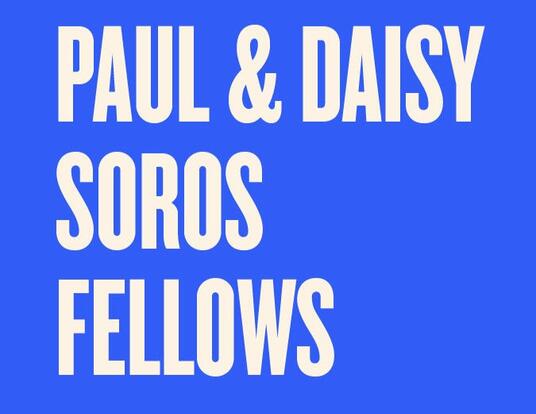Notes From a Writer's Desk: From Text to Text

The Fellowships & Writing Center (FWC) recently held two talks as part of our annual April Speaker Series: “The Translator as Reader and Writer”; and “Moving from the Dissertation to the Book.” In the first—a collaboration with the Language Center and Translation Studies 260, with support from the Elson Family Arts Initiative Fund—we had the privilege of hosting award-winning translator and author Tim Parks, who foregrounded the translator’s approach to reading as well as the dialogic essence of a text. The following week, we were treated to an enlightening conversation on the first book project after the dissertation, with panelists Anna Wilson, assistant professor of English at Harvard, and Rachel Steely, Weatherhead Scholar and history PhD from Harvard.
While these talks might seem to bear little similarity, a common theme emerged: the transformation of one form of text into another. There are obvious differences, of course. And yet, both embody the original Latin sense of translatio, a carrying across, a transference of words and ideas from one place to another—whether across languages or genres. Central to both, moreover, is a recognition of the future reader, who makes a potential text an actual text. The purpose of that text and its intended audience make all the difference. Below are some reflections from these two talks. You can view the full recordings on the recorded workshops page of our website (accessible via HarvardKey).
The Translator as Reader and Writer
What makes a text a text? Is the translator the most intimate reader of a text? These two questions were at the heart of Tim Parks’ recent talk, moderated by Tom Wisniewski from comparative literature. A prolific translator and author, Parks expressed his intention from the outset to focus not on the translator as writer, but on the translator as reader. For a text only becomes a text, in Parks’ eyes, when there is a reader, and it only needs translation when there is a community of readers outside of the original linguistic (and cultural) context who want to be a part of it. Because that goal informs the translator’s reading, the text happens for a translator in a different way than it happens for other readers.
Progressing through a range of passages—from sources as varied as a Dutch bible, Chaucer, Jack Kerouac, and Primo Levi—Parks demonstrated with humor, eloquence, and palpable enthusiasm the challenges of translation. Parks has provided English versions of such masterful Italian writers as Pasolini and Pavese, yet here he began with amusing examples illustrative of Italian society: a train station announcement, for instance, bogged down by useless and redundant information. But there was a deeper meaning to these examples: all texts contain material that is not semantically necessary. Such inclusions contribute to a cultural aura, and the translator faces the unenviable task of deciding if that cultural aura exists in the new context. In other words, one needs expansive cultural fluency as much as linguistic fluency to translate. This dilemma is compounded by the fact that the translator rarely feels the language as intimately as a native speaker and hasn’t internalized the context in quite the same way. The translator, that is, starts at a disadvantage.
To use a literary example, Parks turned to Party Going, a 1939 novel by Henry Green, in which form and content reflect and inflect each other. At one point, Green describes a fog so thick that not only did a poor bird thump into a balustrade, but language itself broke down, losing its syntax. Adding to the complexity, an English reader would understand the tone to be from northern England, where possessives are often dropped, whereas an American reader would miss that subtlety. Even in one’s own language, an act of translation unfolds, depending on one’s positionality. Italian translations flattened the prose entirely, correcting the text, and in this, stripping it of its deeper resonance.
How, then, should one translate? Acolytes typically fall into two camps: that of the belle infidèle, in which the translation is beautiful even at the expense of accuracy; and that of the reliable translator, who closely follows the form of the original but produces something unattractive. Nabokov, for one, appreciated the latter over the former. But the dichotomy is false. We can get close to the original and write well, Parks suggested. Somewhere in the space between the two poles lies a sweet spot, a translation intimately attentive both to form and content. The key is being a good reader and having a good grasp of both the original and new audiences. (That sensitivity to context is where a human still has the advantage over AI.)
Academic writing, too, involves a translation from a technical or imaginative language that is fully in possession of the author to a shared text that makes critical ideas legible to a readership, thus enabling an exchange, an intellectual dialogue. That final version that reaches a readership represents a long process of compromise, and in the end leads to something new that lends itself to an indefinite afterlife, extending possession, as it were, to countless more readers than when it began.
-CB
Moving from the Dissertation to the Book
Transforming a dissertation into a first book project is a special kind of translation that requires deep consideration of intellectual, professional, and practical goals. In a conversation moderated by FWC postdoctoral fellow Josephine Reece, our panelists Anna Wilson and Rachel Steely provided two contrasting experiences of the early stages of preparing dissertations to be published as books, Wilson’s as an academic publication and Steely’s as a trade book. Wilson and Steely provided helpful reflections on their own experiences selecting a publisher, preparing a book proposal, working with an editor or agent, and conceptualizing the differences between the dissertation and the book.
Unsurprisingly, there is no conventional path of transformation from dissertation to book. Factors such as discipline, career stage, professional goals, and press processes will all influence the shape this transformation takes. Some academic presses may require a peer review of the full manuscript before offering a contract; trade presses have different expectations for proposals based on the author’s profile. Similarly, timelines can vary widely depending on an individual publisher’s operations and your own professional requirements.
Both Steely and Wilson agreed that it is important to build relationships and have conversations with a wide range of individuals including peers, authors in a slightly more advanced stage of publication, editors, and agents (in the case of trade books). Informal conversations at conferences with publishers, for example, may not only help you as you conceptualize the project, but will help you and editors determine the best fit. Wilson emphasized how important it is to understand how presses differ from one another to assess both intellectual fit and their ability to support you professionally and reach your intended audience. Steely and Wilson also recommended that you have a book proposal drafted before sending serious inquiries to agents and editors.
Readership and intended audience will have an important influence on how you shape the book project. Steely noted that she wanted a trade press that would reach a wide audience while still having scholarly heft and a serious non-fiction style. Though it is tempting to try and target everyone, that, Steely noted, ultimately dilutes the core arguments of your project. Similarly, Wilson emphasized that in the academic space, a book project that is meant to be part of a tenure file needs to be legible to the disciplinary audience that aligns with your department, while also reaching other possible scholarly outlets. Consider whether you want your book to be read by undergraduates, be produced at a price affordable to graduate students, and/or speak to more than one discipline. Once this readership has been identified, you’ll need to determine how that changes the narrative arc or shape of the book (as well as what press will be the best fit for such a readership).
The elephant in the room, of course, is how the first book differs from the dissertation. Can the dissertation be written to make transformation into a book easier or quicker? Is there a special trick?
According to Wilson and Steely, the answer is no, and that is probably best. When writing a dissertation, they agreed that the best course of action is to write the dissertation well and in a reasonable time frame. The dissertation is meant for a specific (and narrow) audience to convey an original contribution to knowledge and demonstrate your expertise in the subject. A book often has very different goals, particularly around readership. Wilson suggested that taking space between finishing the dissertation and conceptualizing the book can help you get out of the granular levels of the dissertation work and think better about big questions and contributions. Similarly, Steely recommended thinking of the dissertation and the book as two different projects working with the same material. The book, then, as a transformation of text, is not only a translation of form, but a translation of ideas.
-SJ
Banner image courtesy of the Harvard Art Museums (Antonio Tempesta, "Dryope Changed into a Lotus Tree")
Ready to book an appointment with FWC staff? Access the FWC intake form.
Get the Latest Updates
Join Our Newsletter
Subscribe to Colloquy Podcast
Simplecast Stitcher





